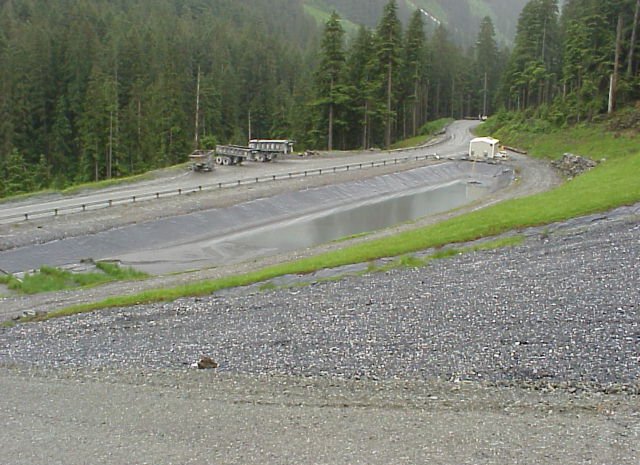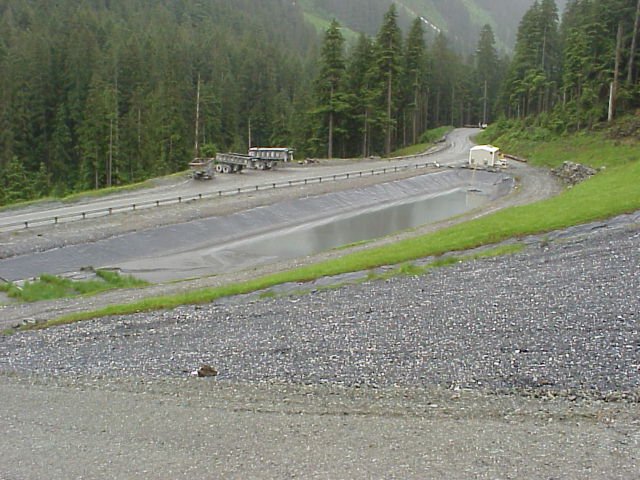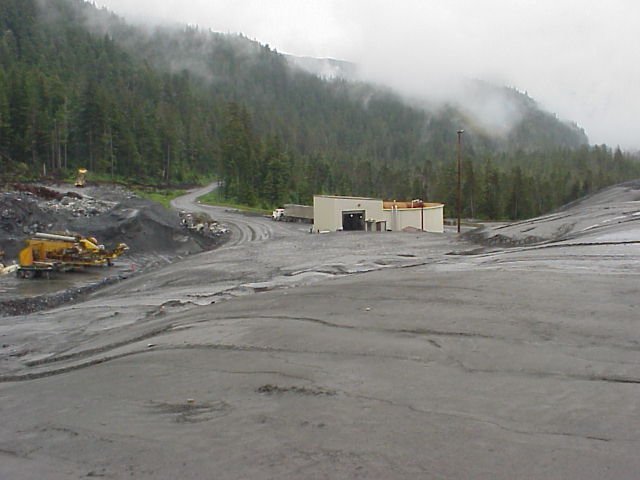
Summary
Greens Creek is a large, underground silver mine located in Southeast Alaska, which also produces smaller amounts of gold, lead, and zinc. The mine is the 5th largest silver producer in the world, and the largest in the US. The primary environmental concerns at Greens Creek are acid mine drainage in the watershed and concerns about the storage of mine tailings waste in a National Monument.
Mine information
The mine is located in southeast Alaska on the northern end of Admiralty Island, within the Admiralty Island National Monument, about 15 miles south of Juneau. In 2009 the mine produced 7.5 million ounces of silver and 67,000 ounces of gold. Until 2008 Kennecott Minerals (a subsidiary of Rio Tinto) part-owned and operated the mine; currently the Hecla Mining Company owns the mine in full.
The deposit at Greens Creek was discovered in 1975 and full production began in 1989. The mine closed for a few years during the mid-1990’s due to low metal prices but currently operates at capacity. It is the largest private employer in the Juneau Borough, employing 270 people with a payroll of around $26 million. Historically the mine used diesel generators for power generation, but now derives 95% it’s power directly from the grid in Juneau via a submarine cable. The mines processes dore bars on site, which are then transported by ship for further refining.

Environmental Concerns
According to the EPA “Toxic Release Inventory (TRI)”, Greens Creek is the second-largest producer of mining-related toxic waste in Alaska (behind Red Dog Mine). The vast majority of the waste comes in the form of crushed rock that contains a variety of toxic metals or compounds such as arsenic and lead. In addition to the volume of waste rock, there are concerns at Greens Creek regarding acid mine drainage and the aesthetic and philosophical implications of deposing mine tailings waste within the National Monument. The mine has been cited numerous times by the EPA for violations of the Clean Water Act, although not since 2006. A 2009 independent environmental audit (5 MB) of Greens Creek Mine documented a variety of problems or potential problems at the site.
Acid Mine Drainage
The initial environmental impact statement for the mine claimed there was very low potential for producing acid mine drainage at this site. However, in 2001 and 2002 the mine began to note increasing metal leaching around the site, and in 2003 the Alaska Department of Conservation (DEC) documented acid mine drainage at the mine. The DEC currently claims that the risk of long-term acid production at the site is low, based on the potential buffering capacity of the surrounding rock, and the possibility that the site could be modified during mine closure and reclamation, to “increase the likelihood” that acid production won’t occur. If sufficient weathering occurs over this time, acid production will commence, long after the mine has closed, and will then potentially require water treatment forever.
In 2002 the DEC increased the reclamation bond at Greens Creek to $24 million to cover the costs of prevention and cleanup of future acid mine drainage at the site, however, several environmental groups objected that the bond was insufficient to cover all costs if the company went bankrupt. For example, one 2003 study estimated that the costs to prevent acid mine drainage for 100 years after mine closure would cost the state more than $100 million over the existing reclamation bond. Presumably, the costs to prevent acid mine drainage in perpetuity would be greater still.
Mine tailings

To process the ore, Greens Creek uses a floatation process, which involves the addition of compounds such as copper sulfate, diesel fuel, and sodium cyanide to the ore before separation of the valuable components. The resulting mine tailings are then thickened with concrete and disposed of, either as backfill in the mine or at dry tailings disposal sites. The mine has a tailings impoundment and dam which is used to store and then treat water that passes through the mine site, or that is used during mining. These disposal sites originally covered 29 acres nearby, but in 2004 the mine received approval from the US Forest Service to expand this to 85 acres, all of which is located within the National Monument.
Latest news
In October 2010 the US Forest Service (USFS) announced they were preparing an Environmental Impact Statement (EIS) for a 200-acre expansion of waste storage at Greens Creek. In February 2011, Greens Creek suggested that in addition to the waste storage expansion they were considered expanding the mining area for a 30-50 year extension of the mine life. The USFS approved the tailings expansion in August 2011. However, by mid-2013 there were still concerns that if storage space wasn’t found the mine could close by 2016 but in late 2013 a limited expansion was permitted.
Further Reading
- > Alaska DNR page on Greens Creek (contains all permit and documents related to the mine)
- > Wikipedia article on Greens Creek
- > EPA "Fact Sheet" for wastewater discharge permit at Greens Creek
- > Northern Alaska Environmental Center page on Greens Creek
- > Hecla Mining Company website on Greens Creek
- > Southeast Alaska Conservation Council (SEACC) page on Greens Creek
Created: Jan. 19, 2018